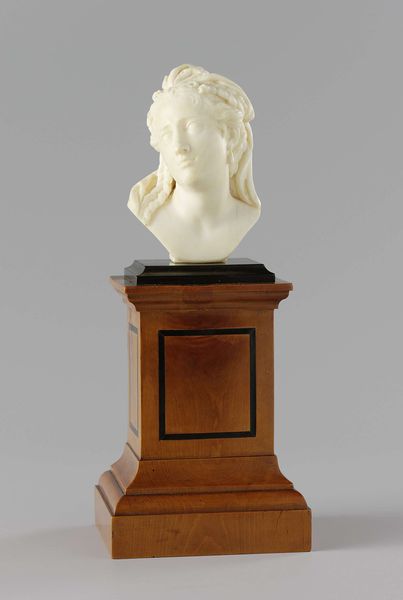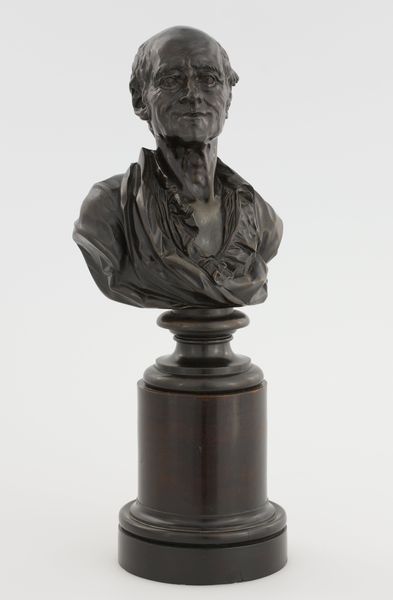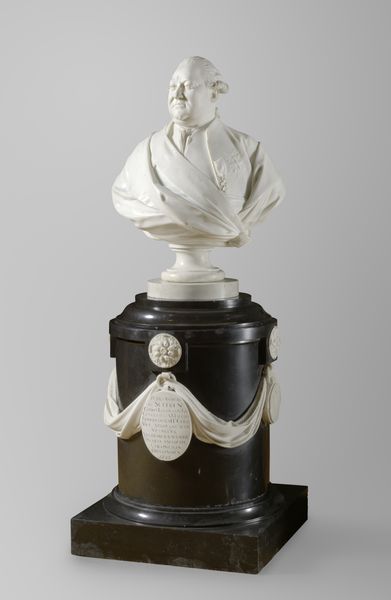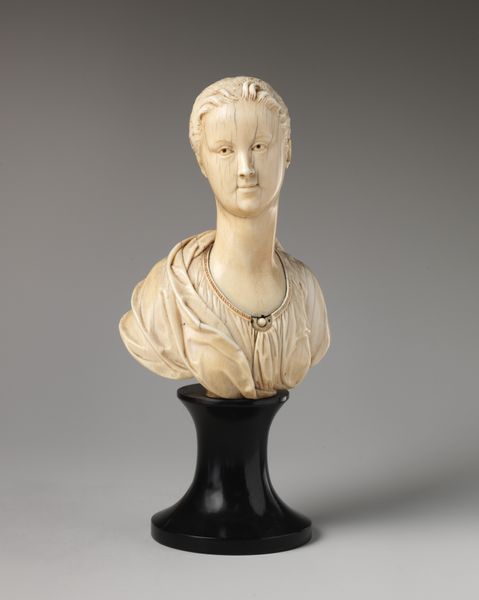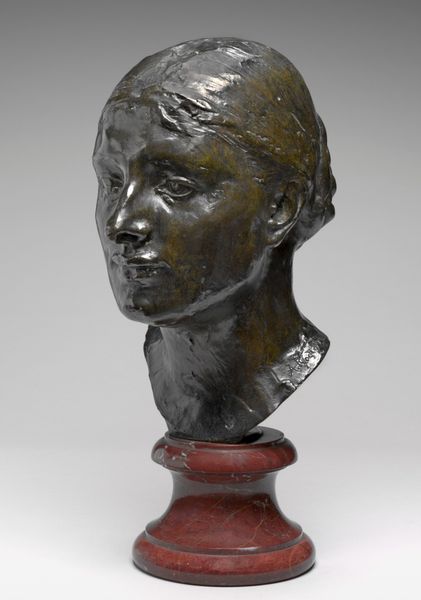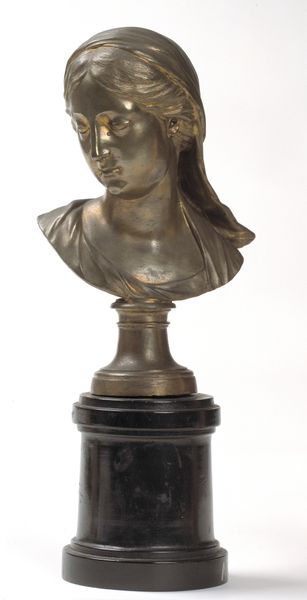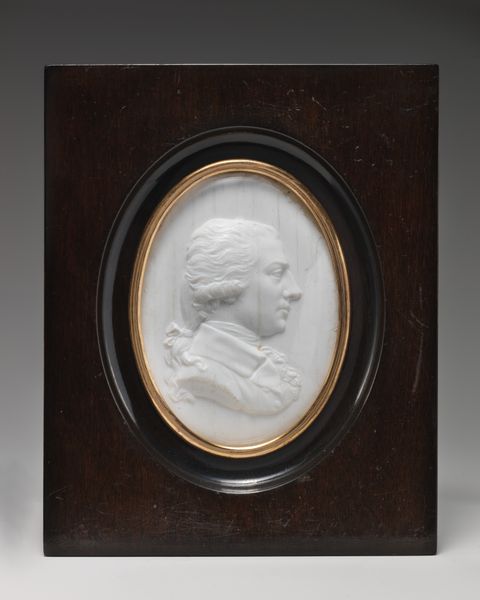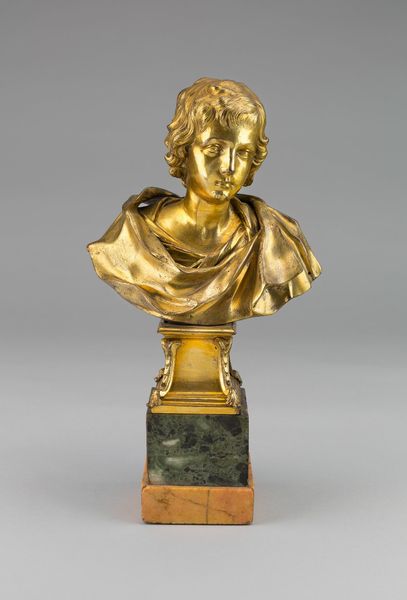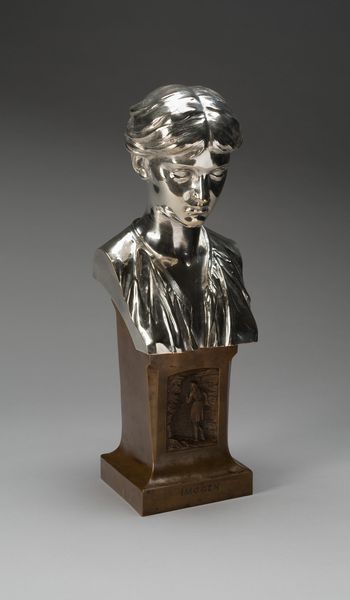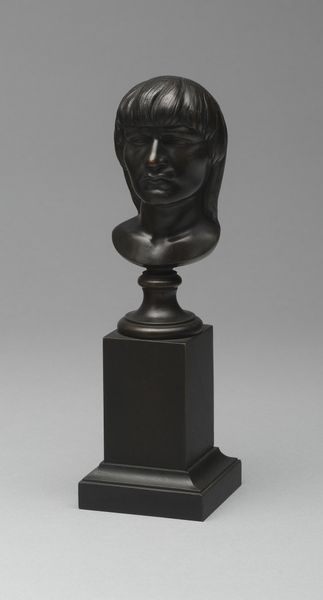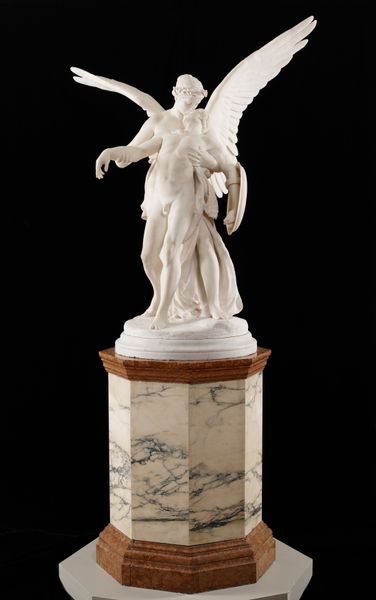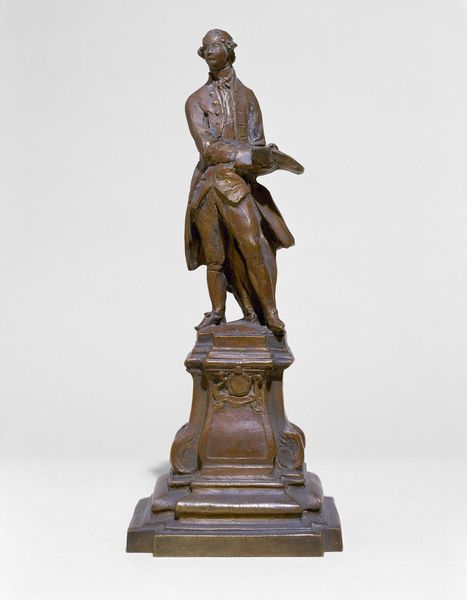
sculpture, wood, marble
#
portrait
#
baroque
#
sculpture
#
ceramic
#
wood
#
marble
Dimensions: height 8.5 cm, height 22 cm
Copyright: Rijks Museum: Open Domain
Curator: My first thought seeing this sculpture is melancholy, a quiet stillness radiating from the figure's downcast gaze. Editor: I agree. What we’re looking at here is a marble bust entitled “Cleopatra and Lucretia,” sculpted by Jan Baptist Xavery in 1732. It’s an interesting pairing, wouldn't you say, setting up these two figures in the same breath. Curator: Oh, absolutely. There's a definite echo, almost like looking into a mirror reflecting two different, yet tragically intertwined fates. What a choice to bind them. Lucretia's tragic suicide after her rape and Cleopatra, facing her demise rather than submitting to Roman rule… I wonder, did Xavery intend to comment on female agency? Editor: Xavery clearly invites this dialogue, prompting viewers to question women's roles in times of political and social unrest. This sculpture functions, I would argue, as a site of contemplation, exploring both the aesthetic ideals of the Baroque era and the darker realities faced by women in positions of power—or lack thereof. We see the intricate detail in the drapery and her hairstyle, reflecting the era's grandeur, while her somber expression hints at the constraints and violence shaping women’s lives. Curator: You are right. And just thinking about marble as a material—the artist took such heavy substance and imparted a softness, vulnerability…almost breathing life into stone. Marble itself feels incredibly permanent and powerful, but here it communicates surrender. Editor: Yes. The juxtaposition is not coincidental. What Xavery does is offer a critique on the performative aspects of femininity of the 18th century while also emphasizing historical trauma. What does it mean for a woman's worth and place in society if it all ends when patriarchal expectations or societal whims have run out for them? I'd like to know, do we, perhaps, see any potential for change by seeing these works together, by the confrontation between death and grief? Curator: A hope flickering amidst sorrow. The merging of identities is a clever device. Thank you, it all feels, suddenly, so alive. Editor: Always is. Always was.
Comments
rijksmuseum over 2 years ago
⋮
Jan Baptist Xavery, court sculptor in The Hague, was exceptionally versatile. In addition to funerary monuments, portrait busts, marble mantelpieces and even furniture, he made refined figurines in wood and ivory, such as these Classical female heads. They represent famous beauties from antiquity, Cleopatra and Lucretia, both of whom took their own life, one out of shame, the other out of sorrow.
Join the conversation
Join millions of artists and users on Artera today and experience the ultimate creative platform.
